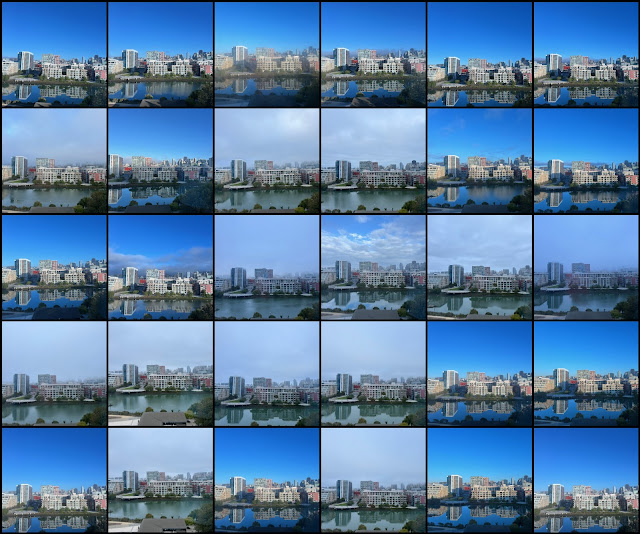This week the moon rose above the East Bay hills, large as a balloon, shining brightly against the sky. The Earth reacted with King Tides; tides that run extremely low to extremely high. Good surfing time, surfers flock to the Mavericks near Half Moon Bay to dare the power of the water.
Someone once said it's important to take risks throughout your life and continue learning. I haven't tried surfing, but we are taking a risk by downsizing, moving from the suburbs to a city, changing the patterns of our lives, and meeting new people.
We drove through Danville last weekend. Our trip was a reminder of the area's vibrant autumn leaves that we hadn't seen in San Francisco. Instead, we see the moon rising at the horizon, the tides along Mission Creek, and the seabirds that react to the flow of water.
We thought of all the places we have stayed in the last year and a half from extended-stay hotels, a beach house, VRBOs, and two apartments in the same complex. Now we are gradually moving to our condo a few blocks away. We look forward to our permanent move but we don't expect to be living there till after the holidays.
We took the first delivery of our stored goods, which included the furniture that would fit in a smaller space and the essentials for everyday living. Boxes spread across the floor full of clothing, kitchen equipment, house management files not on the computer, and bedding, all that had been packed away for a year and a half waiting for our next move. Finally, I had my cutting boards (both for the kitchen and my art space, which is no longer an art room, but good enough), good knives, egg slicer, and pencil sharpener. I unwrapped the bowls I used to hold rice and vegetables. I looked at the baking sheets and pans and wondered if I would ever make cookies or cupcakes again. We unearthed the espresso machine and looked around for a place to put it. I had hoped to use a cabinet with shelves for cups but it is too narrow and we could see the whole thing being flipped over onto the floor with one accidental bump.
We still have more boxes to come: my art supplies other than the basics I have had with me, Bill's office accouterments, and our books. Still, as we started the unpacking process, unwrapping each precious object from three sheets of blank newsprint paper, I was reminded of a year in my childhood, when I stole into my parents' bedroom at Christmas, peeked under the bed, and discovered all the contents of my presents. When we unwrapped our gifts on Christmas Eve, I was disappointed to find nothing else for me under the tree. I never looked for gifts ahead of time again. I felt that same sense of disappointment as I unwrapped each item from the boxes. Each time we took a bundle, we would peel off the sheet only to discover a familiar object - one glass of a large set, one plate, one cup with many more to come. All that paper grew into high stacks in our living room.
Unwrapping each bundle, I started a stack of items to give away. I asked myself questions. Do we need eight of these or will four do fine? Or do we need them at all? Would we have parties in our new place? Probably not. Our life has changed again. We enjoy small get-togethers with one or two couples instead, usually at a restaurant nearby.
If you have ever packed up to move, you know that before you move you go through your old place and discard and donate anything you know you will no longer need. When you arrive at your new destination, especially after a long time, and open the first boxes, you have the same feeling as when you pull out the drawer everyone seems to have filled with the detritus of life. In the same way, I looked into our boxes with astonishment/bewilderment as to why these things came with us. Even though we had eliminated a lot from our previous home, we still had too much stuff for a life that we had simplified, no longer needing all those old possessions.
From our new place, we won't see the creek and the seabirds that live by it. Instead, we will have sunsets and a broad view of the cityscape. We look down at the Japanese maples at the front of the building, which still haven't turned from green to their autumn glory. Huge sycamore leaves drop onto the sidewalk until the wind picks them up and throws them into the air. As we walked out of our building, we watched as a young boy stood in amazement at the antics of the leaves and couldn't help but smile at his wonderment.
.jpeg)

.jpeg)

.jpeg)

.jpeg)
.jpeg)
.jpeg)

.jpeg)



.jpeg)

.jpeg)
.jpeg)







.jpeg)
.jpeg)






.jpeg)

.jpeg)









.jpeg)





